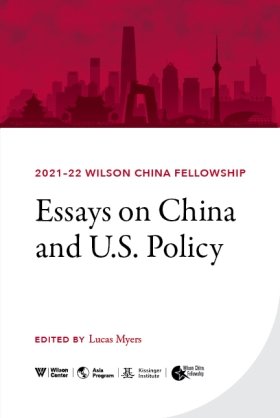Changing State-Business Relations under the U.S.-China Tech War

Abstract
The rise of China’s high-tech giants, such as Huawei and ZTE, has aroused much anxiety in policy circles, leading to a recent “tech-cold war” between the United States and China. How does the movement of Chinese firms up the technology ladder influence U.S.-China relations? More specifically, can the United States weaponize its position on the supply chain effectively to contain China? Have China’s businesses collapsed after the launch of the tech war? This paper starts with the state-business alliance behind China’s joint venture period and the engagement with the global value chain period, when the incentives of the state and firms were often misaligned. Then it proceeds to analyze how the interruption of the global value chain acted as an external shock that reshuffled state-business relations by aligning the incentives of the state and businesses under the structure of a new technology innovation system. It evaluates how such state-business relations, in turn, influence the effectiveness of U.S. policies in the short and long run. In the short run, the tech war directly reduced the Chinese products relying on U.S. chips, but in the long run, it facilitated the re-alignment of state and business in hardware tech industries and also propelled China into a period of self-sufficiency, an import-substitution industrialization (ISI) period that it originally skipped. Furthermore, businesses in the United States and other regions (especially in East Asia) have adopted various strategies to recover broken value chains via relocation. This means that U.S. policymakers may have overestimated the leverage of their technological advantage and weaponization and underestimated the interdependence along the value chain.
Implications and Key Takeaways
- U.S. policymakers need to look into the long-term effects of the tech war instead of only short-term goals. A long-term strategy, other than blocking or disrupting the supply chains, is needed for promoting national technological competitiveness. Specifically, the United States should continue to encourage R&D in cutting-edge technology within the electronics and IT sectors (hardware as well as digital). More importantly, the U.S. should continue to attract talent from all around the world and improve its immigration policies. To combat the recent trend that scientists, engineers and scholars emigrate to other countries or return to their home countries, the United States should design policies that make it attractive for existing talent to stay and for new talent to come to the United States in order to sustain the long-term strategy of boosting technology competitiveness.
- The U.S.-China tech war may galvanize China to unify state and business interests and accelerate their technology development by concentrating resources that were previously misallocated elsewhere. The effect of the tech war may be counterproductive for the United States.
- The ability of the United States to weaponize the supply chain is constrained by business interests both inside and outside of the United States as these businesses can relocate supply chains to the Asia-Pacific region and seek non-American equipment.
- In order to maintain its advantages on the supply chains, the United States does not only need a technological advantage in core components but also the ability to scale up the fabrication of these components with U.S. companies in order to address the problem of lacking capability of electronics production. Otherwise, the ability to fabricate core components could be used as a bargaining chip by other countries to weaken the goal of the U.S. strategy.
Author

Assistant Professor, School of Advanced International Studies, Johns Hopkins University.
Explore More
Browse Insights & Analysis
¿Qué Vemos Hoy?


